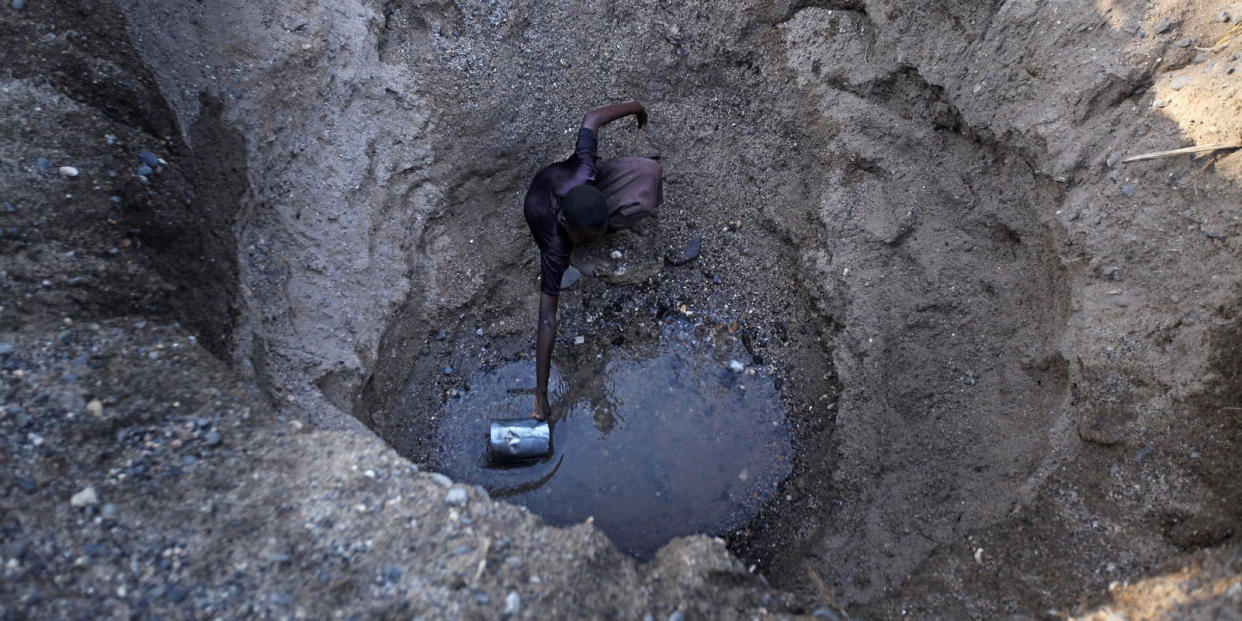The Climate Crisis Is Here. Now.

Some scenes from another stateroom in the handbasket we're all riding into hell. There's a real problem with drought in the northern plains of the United States. From The Bozeman Daily Chronicle:
That dire projection comes as northeast Montana experiences the worst drought in the country, with similar dry conditions in neighboring North Dakota and South Dakota. The federal government has declared numerous counties in the three-state region to be disaster areas and authorized haying and grazing on land meant for conservation to help alleviate the conditions. Federal agriculture officials have labeled as poor or very poor more than half of Montana's 2017 crops of spring wheat, lentils and durum. Combined, the three crops were valued at more than $600 million in 2016.
And it's not just vegans who will get caught in the ripple effects of this. Carnivores will have problems, too.
Ranchers also will lose in this drought, said Ed Hinton, an auctioneer who drives down from Scobey for the weekly sale at the Glasgow Stockyards. Ranchers turn up every Thursday to sell off an animal or two, usually a heifer who didn't get pregnant, or a belligerent steer not worth the trouble, or the hay now selling for $180 a ton. There's nothing like crop insurance for livestock. In times of drought, the U.S. Department of Agriculture opens up grasslands previously off limits for conservation. After that, there's low interest loans. The Thursday sale the week before the Fourth of July brought a thousand cattle to the stockyards, Hinton said, at a time of year when a few hundred cattle at a sale is respectable.
The White House's proposed "skinny" budget cuts nearly $5 billion from the Department of Agriculture, but there's nothing to worry about because the head of its science department soon will be a blogger and talk show host from Iowa. Besides, it can always get worse, and it is doing just that on the other side of the world. From NPR:
Stephen Long'uriareng, 80, has walked two hours to bring her two cows and goats to this watering hole. It's really just a dam carved out the earth, where the rain water mixes with mud and turns into a dark brown color. This is not the place Long'uriareng remembers from her youth. "This whole place used to be green with a lot of pasture. There was nothing being experienced like drought," she said. In fact, nomadic herders have lived off the vast expanses of grass in the Rift Valley for centuries. For years, nothing much changed around here. All the progress of an industrialized Kenya has mostly skipped people here. Only about 3 percent have electricity and more than half the population is not formally educated. That means that to a lot of people here, herding is the only way they know how to survive. But recently, as the climate has changed, the grass here has died and a way of life that has existed for centuries is in danger.
They stop in front of a hut. The roof is gone and half of the mud wall is toppled. Inside lies the corpse of a rotting cow. Lotulia stares at the dead cow silently. This is a common occurrence, she said. The cows are so hungry that at night when nobody is watching, they feast on thatched roofs. The dry grass makes them sick and they find the cows dead and covered with flies the next day. "In a place like this, it's a tragedy," she said. "Because a cow like that means survival." Her friend, Pauline, sighs. She says if they keep living the same life they've been living, they might end up just like that cow.
It's a tired old lament, but a deadly serious one. The climate crisis is here, now, and, despite what the glib youngsters at The National Review may believe, the sea and the sun don't care how cleverly you can turn a phrase. This crisis is coming soon to a neighborhood near you. Luckily, of course, as CBS News informs us, we have the proper scientific institutions to provide the research to cope with it, right?
Right?
Hello?
Is this on?
All three employees were holdovers from the Obama administration. The departures from the division -- one of four subdivisions within the OSTP -- highlight the different commitment to scientific research under Presidents Obama and Trump. On Friday afternoon, Eleanor Celeste, the assistant director for biomedical and forensic sciences at the OSTP, tweeted, "Science division out. Mic drop" before leaving the office for the last time.
Dead cows. We're all dead cows walking.
Respond to this post on the Esquire Politics Facebook page.
You Might Also Like

